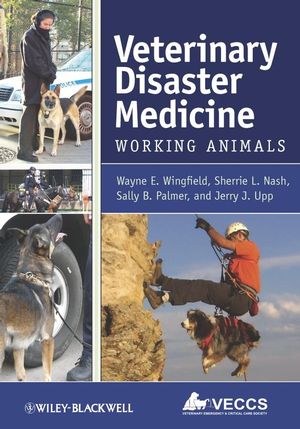Veterinary Disaster Medicine: Working AnimalsISBN: 978-0-8138-1017-1
Binders, 3- or 5-ring
344 pages
March 2009, Wiley-Blackwell
 |
||||||
“Because one is never fully prepared for disaster when it strikes, this book is a potentially useful addition to any veterinary hospital – the key is in reading it before disaster strikes. It is also a book highly recommended for anyone associated with working animals, particularly search and rescue animals which may be exposed to hazards in their line of duty.” (Journal of Small Animal Medicine, 1 May 2012)
“It is also a book highly recommended for anyone associated with working animals, particularly search and rescue animals which may be exposed to hazards in their line of duty.” (Journal of Small Animal Medicine, 2012) "Each author has been deployed numerous times to disasters. They bring a depth of medical knowledge as well as a breadth of practical experience to the textbook. It is a recommended reference for anyone who may find themselves with a need to deal with animals in a disaster, whether by choice as a disaster responder or by chance as a clinician whose practice may become involuntarily part of a disaster scene." (Journal of the American Veterinary Medical Association, June 2010) "The outline format distills a great volume of information to key elements pertinent to natural disasters such as firestorms or floods or to intentional disasters such as bomb blasts, chemical injury, or biologic agents. A broad knowledge base was distilled through experience into this concise resource. Indeed, the most important component of this book is the veterinary medical treatments adapted to disaster hazards as they apply to canine and equine patients. Its outline format and spiral-bound form make it a practical resource for field use in disaster response." (Journal of Zoo & Wildlife Medicine, December 2009) "Excellent general information." (Vets Today, Winter 2009) "[A] comprehensive guide to providing first aid to service dogs and horses. Comon injuries and uncommon scenarios - including bomb blasts, chemical injury and biological contamination - are covered in a guide offering quick reference." (Midwest Book Review, July 2009) "I would recommend this book to any clinic that is located in a potential disaster area subject to flooding, fire, tornado, earthquake or other event. Exposure can also include non-working animals and it would help to have this book on the shelf." (Veterinary Information Network)



